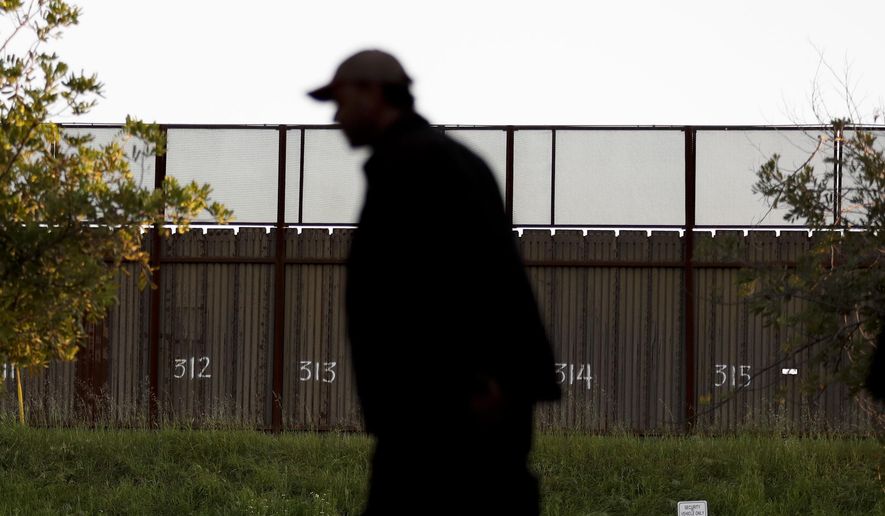Homeland Security said it began construction Tuesday on the prototypes for President Trump’s new border wall.
In a short notice, U.S. Customs and Border Protection said the building began in San Diego on eight prototypes, which had been awarded over the summer.
Four of the prototypes are concrete walls and four are nonconcrete designs, all selected from dozens of proposals submitted by contractors earlier this year.
“We are committed to securing our border, and that includes constructing border walls,” said Ronald Vitiello, acting deputy commissioner at CBP.
The agency released a video showing equipment being unloaded and the ground being dug out at the site.
The prototypes are designed to test out new approaches, materials, strategies and technology as Homeland Security pushes forward with Mr. Trump’s goal of a border wall.
The designs are between 18 and 30 feet, and will be evaluated on how well they deter climbers, how well they withstand breach attempts and what sort of awareness they allow agents who patrol the border. The prototypes are expected to be finished within 30 days.
“Moving forward with the prototypes enables us to continue to incorporate all the tools necessary to secure our border,” Mr. Vitiello said.
Agents — and Mr. Trump — say visibility through the wall is critical for knowing what’s going on in Mexico, helping agents avoid ambushes or other potential dangers, as well as spot migrants or smugglers preparing to try to cross.
The concrete designs are less useful right along the border, officials said, and will likely be used as secondary fencing set back a bit.
About 354 miles of the 1,952-mile border are currently protected by some form of wall. Another 300 miles have vehicle barriers, which allow easy penetration by pedestrians or animals but are designed to stop trucks and cars from barreling over the border.
Mr. Trump during the campaign said he wanted to see a border-long wall, but more recently has said between 700 and 900 miles need a barrier. It’s unclear whether that’s a total number or is in addition to the current fencing.
His 2017 budget called for money for replacing some outdated parts of the current wall, while his 2018 plan asked for $1.6 billion to erect 32 miles of new fencing in Texas, another 28 miles of new levee wall, also in Texas, and 14 miles of replacement fencing in San Diego.
The House has approved the money, but the Senate has yet to take up the bill, and Democrats have announced they will try to derail any legislation that includes border wall money.
There is enough money in the current 2017 budget to pay for the prototypes.
• Stephen Dinan can be reached at sdinan@washingtontimes.com.




Please read our comment policy before commenting.